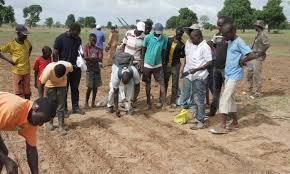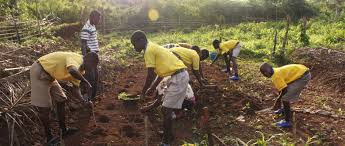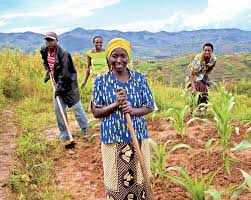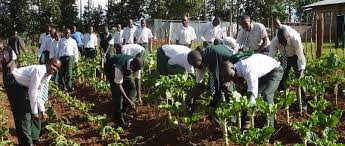There are many types of rural youth clubs. Any club that is organised for the rural youth for the purpose of citizenship training, social and agricultural development could be regarded as a rural youth club.
There are definite steps for organising rural youth clubs which are discussed in this article. Examples of rural youth clubs include Young Farmers’ Club, Bird Foundation Nature and Nurture Club.
Definition of Rural Youth Club in Agricultural Setting

A rural youth club is a group of young people within the age range of 12–30 years under the guidance of a social worker, local volunteer leader or an extensionist.
Rural youth clubs are geared towards developing the youth to take up leadership positions in the area of agriculture, home economics, community development, commerce, industry and civic responsibilities.
Typical examples include forest conservation clubs, wildlife protection clubs and Young Farmers’ Club. Membership is voluntary and officers are elected. Rural youth clubs, like other clubs, are good means of attracting young people together for the purpose of skills acquisition under the extension agent, technical or professional leader.
The club holds regular activities and meetings. Membership requirements include parents’ consent; ability to keep records; agreement to embark on projects related to the club; an understanding to exhibit products; accept and demonstrate new technologies relevant to the club (Ovwigho and Ifie, 2009; Savile 1965).
Read Also: Appearance, Features and Farming Guide of Cod Fish
Key Steps for Organising Rural Youth Clubs for Agricultural Development

The steps for organising rural youth clubs are discussed below:
1. Understand the Village/Community: This takes the form of community survey or profile description. The extension agent should identify the physical, social and demographic conditions of the community in order to be well acquainted with the natural resources, culture, language, age, habits, leadership patterns and structure as well as social and economic institutions.
A good understanding of the community enables the social worker to design effective and workable development plans.
2. Legitimating: This involves introducing the club to the community. First, present the idea to the traditional rulers and Chiefs. The consent of a cross-section of parents and other leaders within the community is also important.
Once the idea is accepted by the traditional rulers and Chiefs, they in turn help to disseminate the information and attract potential members. Second, meet with the youth and parents and get them interested in the proposed club.
It may be necessary to show improved varieties and demonstrate new practices in order to get the parents and youths interested. When a good number of parents and youth have become interested, gather them under the influence of the traditional ruler and explain the objectives of the club, benefits to the youths, parents, and entire community.
Explain the responsibilities of members, local leaders and social workers.
3. Select Advisory Committee: Set up an advisory committee made up of parents, local leaders and members of the club. Projects are usually based on the needs, abilities, and interests of the youth.
The committee should develop a plan for projects implementation. Youths and their parents are advised to select suitable projects for implementation considering available resources.
4. Recruitment of Members: Recruitment of members is a continuous exercise. Recruitment drive involves the use of printed materials or leaflets, personal contact, and mass media publicity.
5. Election of Officers: It is suggested that once about 20–30 members have enlisted in the club, elections should be conducted into the various elective positions.
6. Conducting Meetings: Conducting youth club meetings is a critical issue which requires understanding and good leadership qualities. Poorly organised meetings often generate conflicts which could mar the existence of the club.
The agenda contained in the notice of meetings should be clearly drawn up. Meetings are usually held on a monthly basis. It is beneficial if a schedule of meetings for the whole year is drawn up so that members can prepare adequately in advance.
7. Planning the Club Programme: Planning of a rural youth programme is a joint responsibility of club members, local leaders, parents and the professional youth leader. The club programme includes meetings, tours and other activities planned to cover at least one year period.
When programmes are planned well in advance, it enables members to prepare their own part in advance with regards to activities such as field trips, shows and contests. Basically, youth club programmes of activities should specify the following aspects of the programme:
i. Events and activities
ii. Intended achievement
iii. Time and place of regular meetings
iv. Programme for each regular meeting
v. Special activities for the year which may include exhibition of products or crops grown by members, demonstration of new practice, skills or contests. The programme for the year should be built into a chart and made available to members (Ovwigho and Ifie, 2009).
Read Also: Health, Lifespan and Farming Guide of Catfish
Organisation Principles of a Rural Youth Club for Agricultural Purposes

To organise a rural youth club, the following principles must be borne in mind:
i. carry out recruitment drive for members
ii. make sure that parents of potential members are informed well in advance
iii. carry out a natural and socio-economic survey to determine the most suitable type of rural youth programme for the community
iv. let community leaders agree on the type of club to be established, based on its suitability for the community
v. elect officers through a purely democratic process to ensure capable individuals manage the club’s affairs
vi. plan projects jointly with members, parents, and leaders
vii. hold meetings regularly, at least once a week
viii. ensure the professional leader relates cordially with club officers and other community members to maintain a harmonious atmosphere necessary for the success of club programmes
Do you have any questions, suggestions, or contributions? If so, please feel free to use the comment box below to share your thoughts. We also encourage you to kindly share this information with others who might benefit from it. Since we can’t reach everyone at once, we truly appreciate your help in spreading the word. Thank you so much for your support and for sharing!

